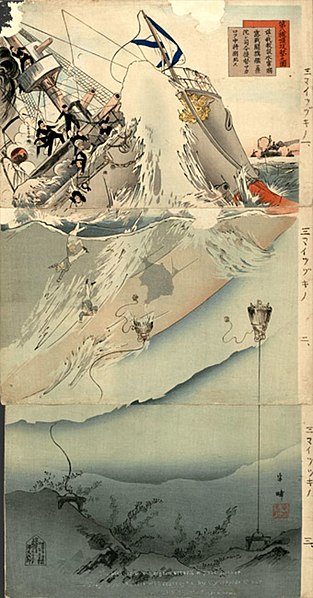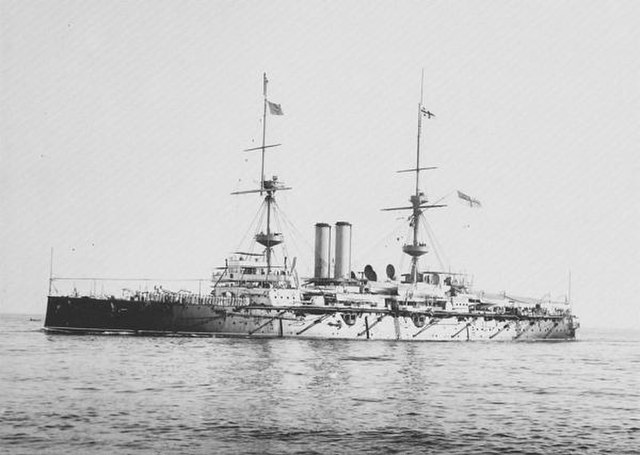Petropavlovsk-class battleship
The Petropavlovsk class, sometimes referred to as the Poltava class, was a group of three pre-dreadnought battleships built for the Imperial Russian Navy during the 1890s. They were transferred to the Pacific Squadron shortly after their completion in 1899–1900 and were based at Port Arthur before the start of the Russo-Japanese War of 1904–1905. All three ships participated in the Battle of Port Arthur on the second day of the war. Petropavlovsk sank two months after the war began after striking one or more mines laid by the Japanese. Her two sister ships, Sevastopol and Poltava, took part in the Battle of the Yellow Sea in August 1904 and were sunk or scuttled during the final stages of the siege of Port Arthur in early 1905.
A postcard of Poltava
A Japanese depiction of the sinking of Petropavlovsk. The original caption reads: "Picture of the Eighth Attack on Port Arthur. The Flagship of Russia Was Destroyed by the Torpedo of Our Navy and Admiral Makaroff Drowned."
A Japanese postcard showing the wreck of Poltava at Port Arthur
Tango at anchor about 1908–1909
Pre-dreadnought battleship
Pre-dreadnought battleships were sea-going battleships built from the mid- to late- 1880s to the early 1900s. Their designs were conceived before the appearance of HMS Dreadnought in 1906 and their classification as "pre-dreadnought" is retrospectively applied. In their day, they were simply known as "battleships" or else more rank-specific terms such as "first-class battleship" and so forth. The pre-dreadnought battleships were the pre-eminent warships of their time and replaced the ironclad battleships of the 1870s and 1880s.
HMS Royal Sovereign (1891) was the first pre-dreadnought battleship of the Royal Navy.
HMS Ocean was typical of pre-dreadnought battleships
HMS Dreadnought shows the low freeboard typical for early ironclad turret-ships. This ship, launched in 1875, should not be confused with her famous successor, launched in 1906, marking the end of the pre-dreadnought era.
HMS Ramillies was the fourth ship of the influential Royal Sovereign class. The diagonal tubes are spars for torpedo nets.








